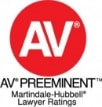A Tragic Mistake
Shortly after Christmas 2013, a 28-year-old man was accidentally shot to death on his own parents’ property. The young man was hunting at night with two companions. The group was using an optical device known as an illuminator, which is used with a rifle to highlight animals’ eyes in the darkness. When the three men became separated, one of the hunters mistook the eyes of his friend for the eyes of a coyote and shot him.
Hi-Tech Hunting
The illuminator is just one of the many hi-tech devices on the market these days that has transformed the sport of hunting. What used to be a test of man versus wild game is now something of a high-definition video game playing out in “real-time.” Some argue that using such advanced technology to catch deer and elk gives hunters much too big of an advantage over their prey. Whatever your preference is–an old-fashioned rifle or a precision-guided firearm–your Denver accident attorney emphasizes that knowing how to properly use your equipment is the only way to ensure safety.
On October 14, 2014, TrackingPoint introduced the first wearable technology for hunting and shooting. Marketing it as the “GoogleGlass for hunting,” ShotGlass is a weapon-integrated digital shooting pair of glasses. ShotGlass was developed to allow hunters to shoot their targets from places of shelter, such as from around corners, covered positions, over and behind walls, and behind trees. By integrating a hunter’s weapon with their glasses in the ShotGlass, a shooter no longer has to actually look through the lens of the firearm to target, aim and shoot their prey.
While the concept of ShotGlass is intriguing and even tempting, some accident attorneys are concerned with whether hunters will know how to use it properly. As with all hunting equipment, training and education are essential to safe operation. But hunters are not taught how to use hi-tech hunting devices at firing ranges or in traditional hunting safety courses.
Apps such as the Burris Elementary rangefinder, the Leupold bow rangefinder, and the Xplat reloading and ballistics aide offer advanced help for the tech-savvy shooter. But what is the learning curve associated with these devices? With respect to ShotGlass, what is the disconnect between the shooter, their actual firearm, and their prey? Focusing on a digital target from a remote location can have its perks, but it can have its hazards as well, especially if there has not been any training on the technology.
Re-Thinking Hunting Safety
The marketing of hi-tech hunting devices has changed the sport of hunting, and the training and education of hunters should reflect that change. Hands-on training with the latest mobile apps, gear, and as of last month, the ShotGlass, should be an available part of every hunting safety course. Hi-tech hunting will then be as safe as its gear intends it to be.
If you would like more information on hunting safety, or if you have been in a hunting-related accident, contact Jordan Levine at the Levine Law Firm today.















